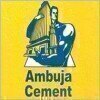Filter interviews by
JSW Cement Process & Production Engineer Interview Questions and Answers
JSW Cement Process & Production Engineer Interview Experiences
1 interview found
I applied via Campus Placement and was interviewed in Jul 2022. There were 3 interview rounds.

Test was basically on Cement industry and cement chemistry.
(5 Questions)
- Q1. Basically more personal questions like dreams and ambitions. Then questions related to cement chemistry.
- Q2. What are the different components of Cement?
- Ans.
Cement is composed of four main components: calcium, silicon, aluminum, and iron.
Calcium: the primary component responsible for binding the other components together
Silicon: contributes to the strength and durability of the cement
Aluminum: helps to regulate the setting time of the cement
Iron: provides color to the cement and also contributes to its strength
- Q3. Why you want this job ?
- Q4. About women empowerment.
- Q5. About the knowledge of jindal group .
Interview Preparation Tips
Interview questions from similar companies

Process & Production Engineer Interview Questions & Answers
JK Cementposted on 31 Mar 2022

(1 Question)
- Q1. Explain Process of cement manufacturing.
- Ans.
Cement manufacturing involves crushing, mixing, heating, and grinding raw materials to form a fine powder.
Raw materials such as limestone, clay, and sand are crushed and mixed together in specific proportions.
The mixture is then heated in a kiln at high temperatures to form clinker.
The clinker is cooled and ground into a fine powder with the addition of gypsum.
The resulting powder is cement, which is then packaged and
(1 Question)
- Q1. Salery expecting after selection.
Interview Preparation Tips

I applied via Shine and was interviewed before May 2021. There was 1 interview round.
(3 Questions)
- Q1. Tell me about yourself, current updates, family background, technical
- Q2. Technical tax questions
- Q3. Future inspiration and committement
Interview Preparation Tips

I applied via Naukri.com and was interviewed in Feb 2021. There were 3 interview rounds.
Interview Questionnaire
1 Question
- Q1. Only general questions asked about work profile.
Interview Preparation Tips

I appeared for an interview in Jul 2020.
Interview Questionnaire
1 Question
- Q1. Process parameters, fan flow calculation quality related questions
Interview Preparation Tips
Process parameters flow calculation etc.

Assistant Manager Interview Questions & Answers
Nuvoco Vistasposted on 23 Nov 2019
Interview Questionnaire
1 Question
- Q1. Questions related to current job profile, achievements. How will do our best job. Questions related to current market environment, where have I worked.
Interview Preparation Tips
So, you need to stay calm and should apply presence of mind. Please go through the job description thoroughly word-by-word and recheck your resume to ensure that you are a best-fit for the position.

I applied via Naukri.com and was interviewed before Feb 2021. There were 3 interview rounds.

(2 Questions)
- Q1. Why are you looking for a change?
- Q2. Why you select job locations so far
Subject expert question
Interview Preparation Tips
- Feel free
- Listing carefully
- Replying employer's questio
- Confidently answered
Read it employers JD carefully.
Avoid more talk in interview.
Answered point to point topics.

I applied via Recruitment Consultant and was interviewed in Oct 2020. There was 1 interview round.
Interview Questionnaire
1 Question
- Q1. Technical and behavioural questions
Interview Preparation Tips

I applied via Recruitment Consultant and was interviewed before Aug 2022. There were 2 interview rounds.

(2 Questions)
- Q1. Tell about yourself and experience
- Q2. Technical round with in depth questions

(2 Questions)
- Q1. Audit standards
- Q2. Internal controls
Interview Preparation Tips
JSW Cement Interview FAQs
Tell us how to improve this page.
JSW Cement Interviews By Designations
- JSW Cement Assistant Manager Interview Questions
- JSW Cement Senior Officer Interview Questions
- JSW Cement Assistant Engineer Interview Questions
- JSW Cement Logistics Executive Interview Questions
- JSW Cement Senior Engineer Interview Questions
- JSW Cement Senior Sales Officer Interview Questions
- JSW Cement MIS Officer Interview Questions
- JSW Cement Mechanical Engineer Interview Questions
- Show more
Interview Questions for Popular Designations
- Production Engineer Interview Questions
- Production Supervisor Interview Questions
- Production Manager Interview Questions
- Production Officer Interview Questions
- Executive Production Interview Questions
- Production Interview Questions
- Senior Production Engineer Interview Questions
- Production Chemist Interview Questions
- Show more
JSW Cement Process & Production Engineer Interview Process
based on 1 interview
Interview experience
Interview Questions from Similar Companies
Fast track your campus placements
|
Assistant Manager
239
salaries
| ₹5.5 L/yr - ₹14.5 L/yr |
|
Deputy Manager
168
salaries
| ₹7 L/yr - ₹22.6 L/yr |
|
Sales Officer
161
salaries
| ₹1.9 L/yr - ₹7.7 L/yr |
|
Senior Officer
109
salaries
| ₹4.2 L/yr - ₹9.8 L/yr |
|
Senior Sales Officer
103
salaries
| ₹4.8 L/yr - ₹10.2 L/yr |

JK Cement

ACC

Ambuja Cements

Nuvoco Vistas
- Home >
- Interviews >
- JSW Cement Interview Questions >
- JSW Cement Process & Production Engineer Interview Questions






















